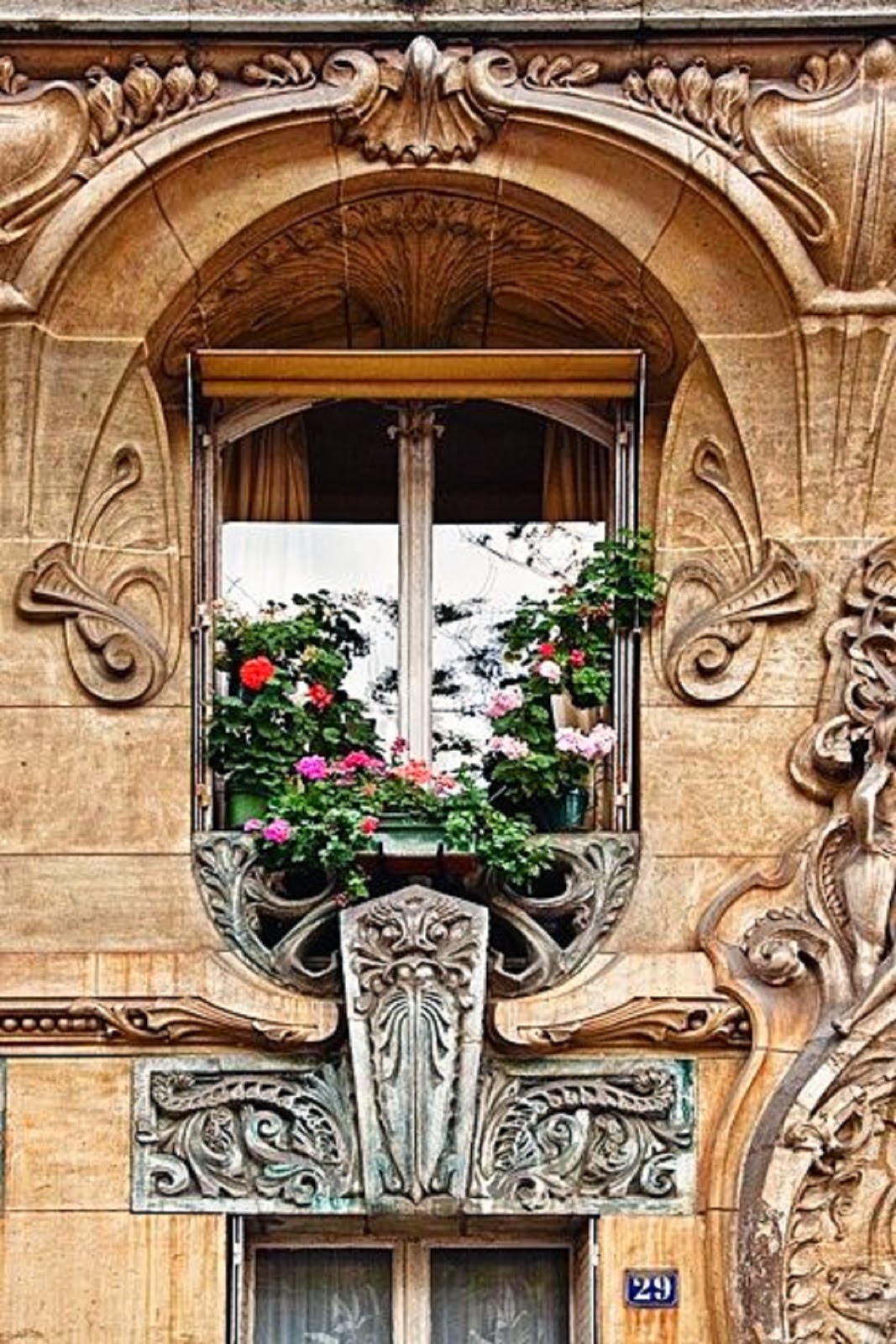#4580. Elegant Art Nouveau façade with characteristic oval window and sculptural decoration
This image showcases a magnificent example of an Art Nouveau (Jugendstil) façade, likely dating from the early 20th century. The building's exterior demonstrates the characteristic flowing lines and organic, fluid forms typical of this architectural style. The central element of the composition is an exquisite oval window, framed by sculptural decoration with expressive floral and plant motifs.
The architectural treatment of the window includes meticulously crafted elements: the arched top is adorned with a shell-like ornament (cartouche), while the side parts feature undulating elements typical of Art Nouveau. Below the window sits a massive bracket with a face mask — a characteristic Art Nouveau element that adds expressiveness and drama to the façade.
The composition gains particular vibrancy from the contrast between the sandy-beige color of the stone façade and the bright flowering plants on the windowsill. Pink, red, and white flowers create a kind of "living decoration" that echoes the organic motifs of the architecture itself. The house number "29," visible at the bottom of the frame, is integrated into the overall composition of the façade.
This architectural fragment represents an excellent example of how Art Nouveau masters sought to synthesize functionality and artistic expressiveness, creating buildings that are perceived as complete works of art, where every detail is subordinate to the overall concept.
